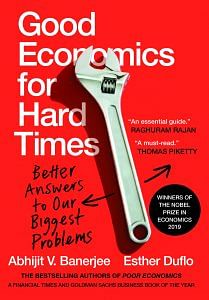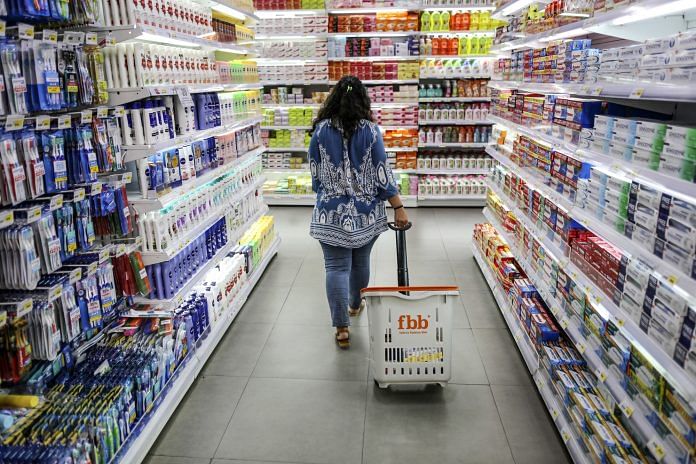Petia Topalova, a PhD student at MIT, had always insisted she had no intention of claiming anyone had been hurt by the trade liberalization. Since she was comparing regions within the same country [India], all she could say was that some areas (those most affected by trade) were less successful in reducing poverty than others. This is entirely consistent with the possibility, which her paper is careful to underline, that the tide of liberalization had lifted all boats, just some more than others. And her work does not imply that inequality increased in India as a whole, just that it went up more in the more trade affected districts.
In fact, because the places most touched by liberalization tended to be somewhat richer to start with, the fact that they did not fare particularly well after liberalization, paradoxically, reduced countrywide inequality. In other papers, Topalova and her colleagues demonstrated some clearly positive economy-wide consequences of the Indian trade liberalization. For example, Indian firms, challenged to find new markets, started introducing new products they could now sell abroad. Moreover, the fact that they could import cheaper and better inputs, indeed ones they could not even find in India before, meant they could make new products for the domestic and international markets.
This increased their productivity and, along with other reforms undertaken by the government in the early 1990s (and some luck with worldwide growth), contributed to the rapid growth of the Indian economy since the 1990s. Nevertheless, it is easy to see why trade economists felt threatened by Topalova’s paper.
Also read: How the world changed economics, and vice versa, in the past decade
The benefits of trade in traditional theory come from the reallocation of resources. The very fact that Topalova finds any difference between more exposed and less exposed districts tells us resources (workers, but also capital) do not move easily, as we noted earlier. If they did, wages everywhere would have been more or less the same. And she is not the only one to find this; a number of other studies also found very little evidence of resource reallocation. But once we give up on the idea that people and money will chase opportunities, how do we hold on to our faith that trade is good? If workers are slow to move across district boundaries, it is plausible they are also slow to move from one kind of job to another. This is entirely consistent with what we know about labor markets.
In India, Topalova found the negative effect of trade liberalization on poverty was exacerbated in states where strict labor laws made it very difficult to fire workers and shrink unprofitable firms, allowing profitable ones to take their place. There is also a body of solid evidence showing that, at least in developing countries, land does not easily change hands. Capital also tends to be sticky. Bankers are slow to cut credit to firms that are not doing well, but also to lend to those firms that are doing well, for the interesting reason that many credit officers, the people who make lending decisions, are terrified of being held responsible for loans that go bad. The easiest way to avoid this is to make no decision; just rubber-stamp whatever decision has been made in the past, by someone else, and let yet another person deal with the loans in the future. The one exception, unfortunately, is when loans are about to fail—then bankers actually give the ailing firms new loans to pay back their old ones, in the hope of postponing the default and perhaps benefitting from a reversal of fortune. This is the phenomenon, in banking parlance, of “evergreening” loans, one of the main reasons why so many banks with seemingly impeccable balance sheets suddenly wake up to a looming disaster.
Sticky lending means existing firms that should have been put out of their misery continue to hang on. At the same time, it also means new businesses have a hard time raising capital, especially in the middle of the uncertainty that comes with, say, a trade liberalization, because the loan officers shy away from taking on new risks. Given these various forms of stickiness, it is plausible that when bad news arrives in the form of greater competition from outside, instead of embracing it and moving resources to their best possible use, there is a tendency to hunker down and hope the problem will go away on its own. Workers are laid off, retiring workers are not replaced, and wages start to drift down. Business owners take a big hit on their profits, loans get renegotiated, all in order to preserve as much as possible of the status quo ex ante. There is no improvement in efficiency, just a fall in the earnings of everyone associated with the industries that lose their protection. This might seem extreme, but Topalova finds something like this in the Indian data.
Also read: Nobel winner Abhijit Banerjee offers cure to India’s ideology-driven public policy ailment
For one, there was very little migration out of the districts affected by liberalization. Even within a region, resources were slow to move among industries. More strikingly still, this was true within firms. Many firms in India produce more than one product, so one would expect firms to close down product lines competing with cheaper imports and reorient production toward products facing less of a disadvantage. There is nothing to stop this even where labor laws make it hard to fire people, but Topalova’s research found very little “creative destruction.”
Firms never seem to discontinue a product line that has become obsolete. Perhaps it is because the managers find the transition process costly: workers need to be retrained, new machines need to be purchased and installed.
 This excerpt from Abhijit Banerjee and Esther Duflo’s book Good Economics for Hard Times – Better Answers to our Biggest Problems has been published with permission from Juggernaut India.
This excerpt from Abhijit Banerjee and Esther Duflo’s book Good Economics for Hard Times – Better Answers to our Biggest Problems has been published with permission from Juggernaut India.






